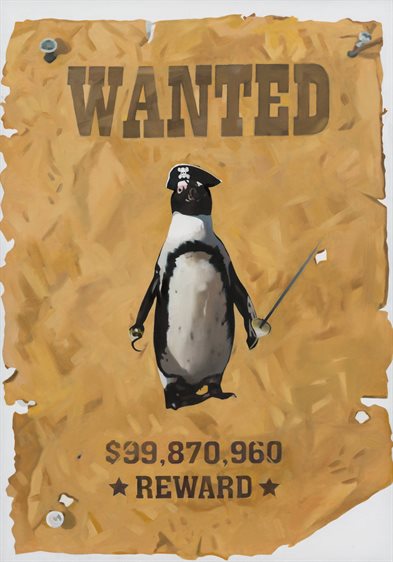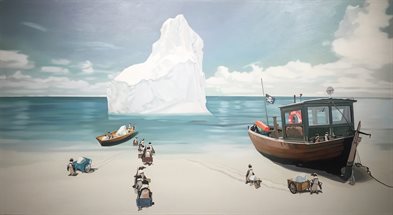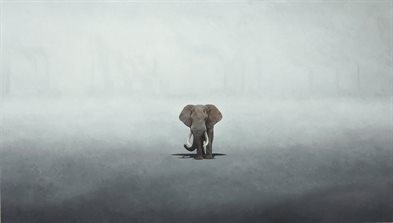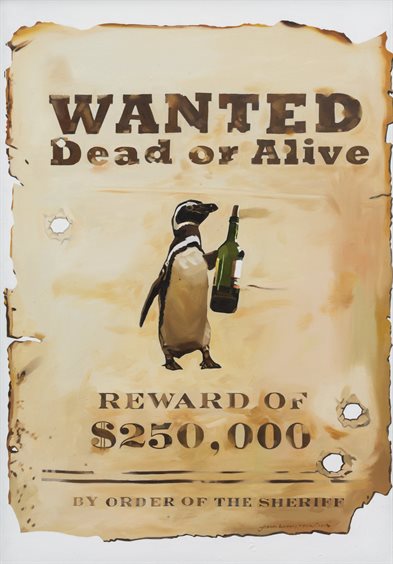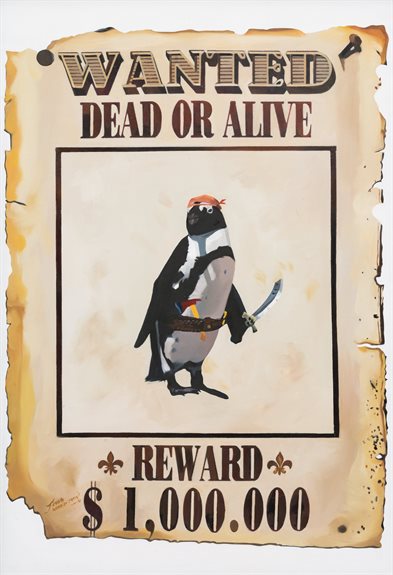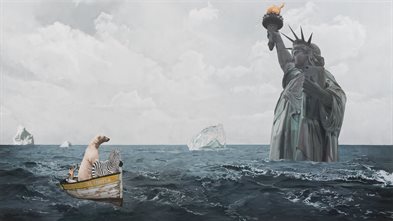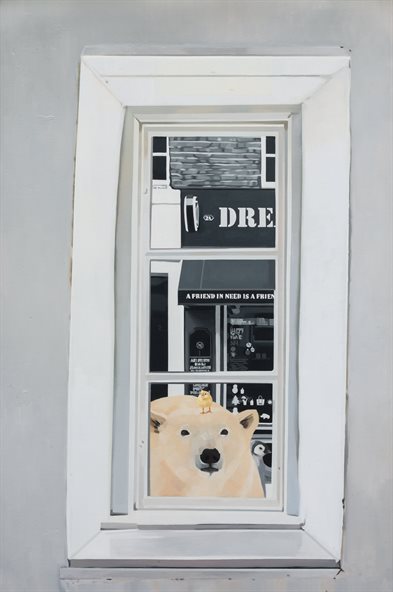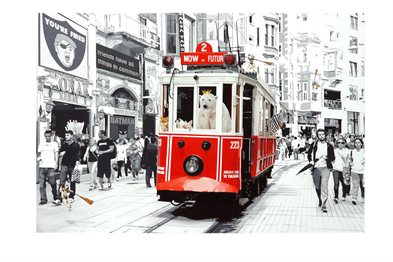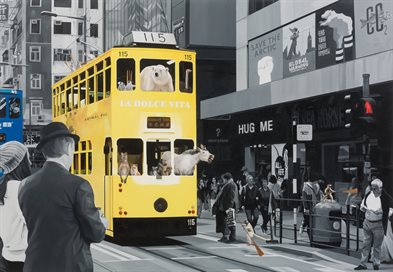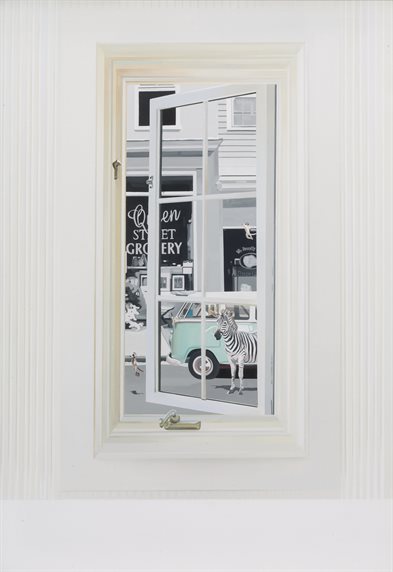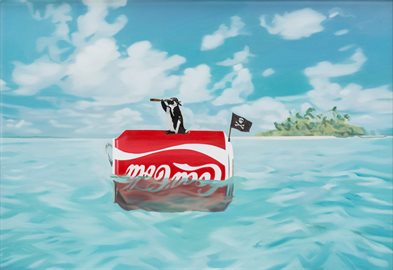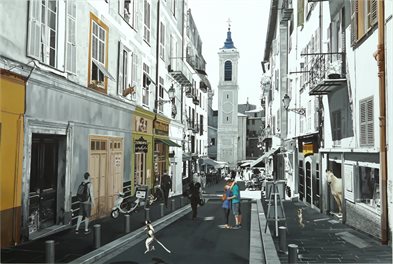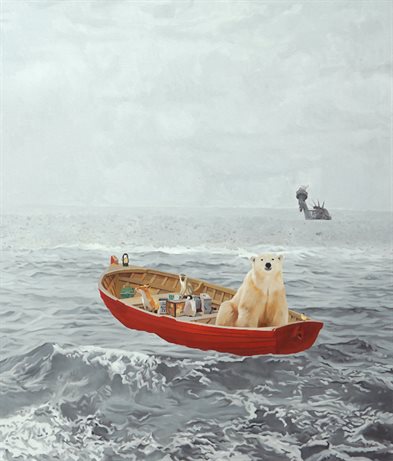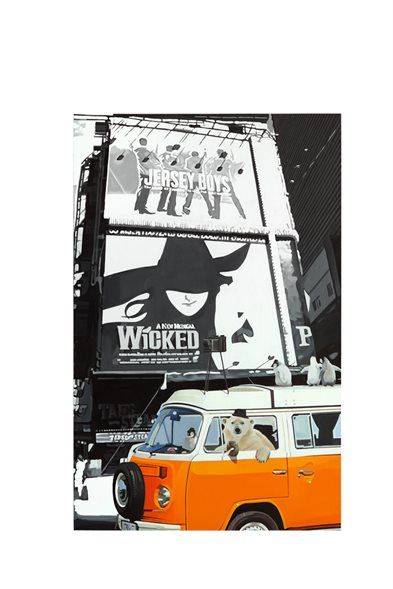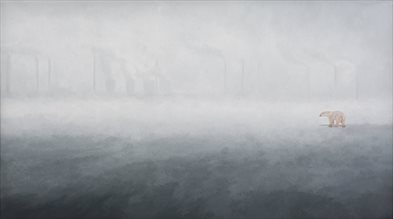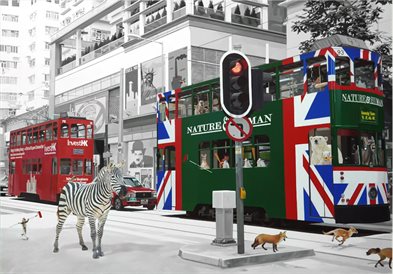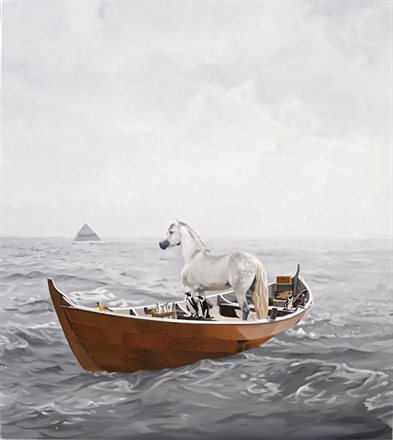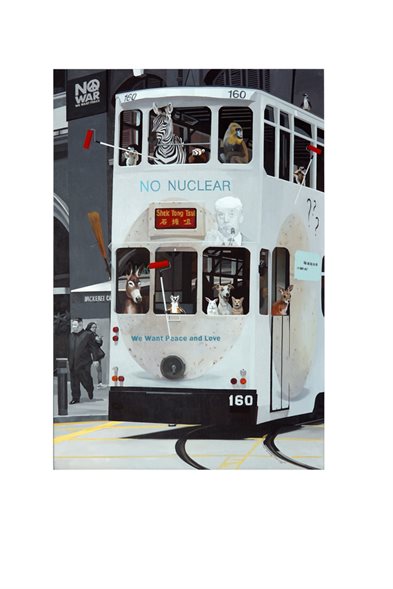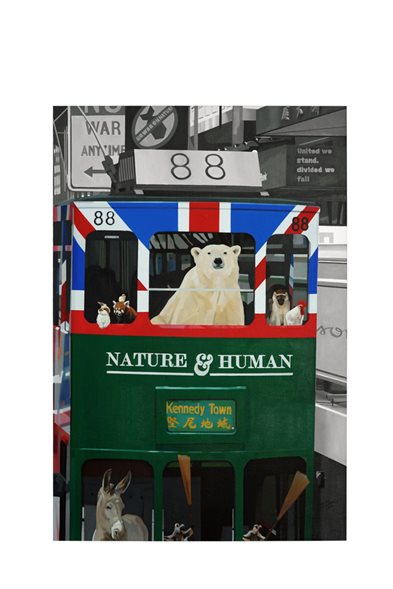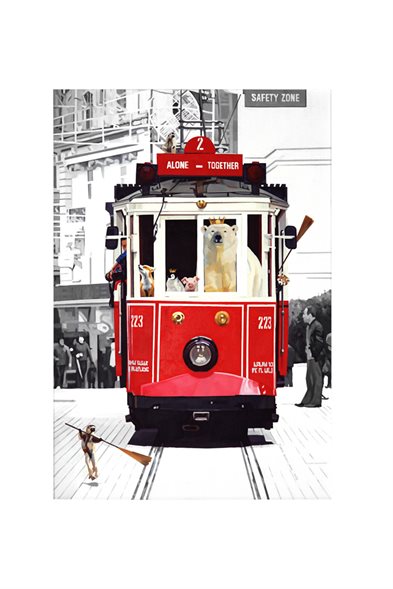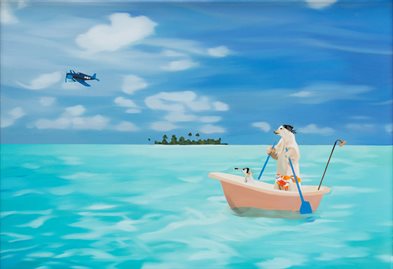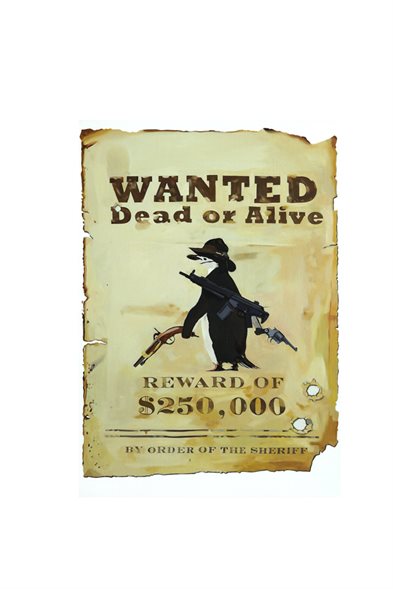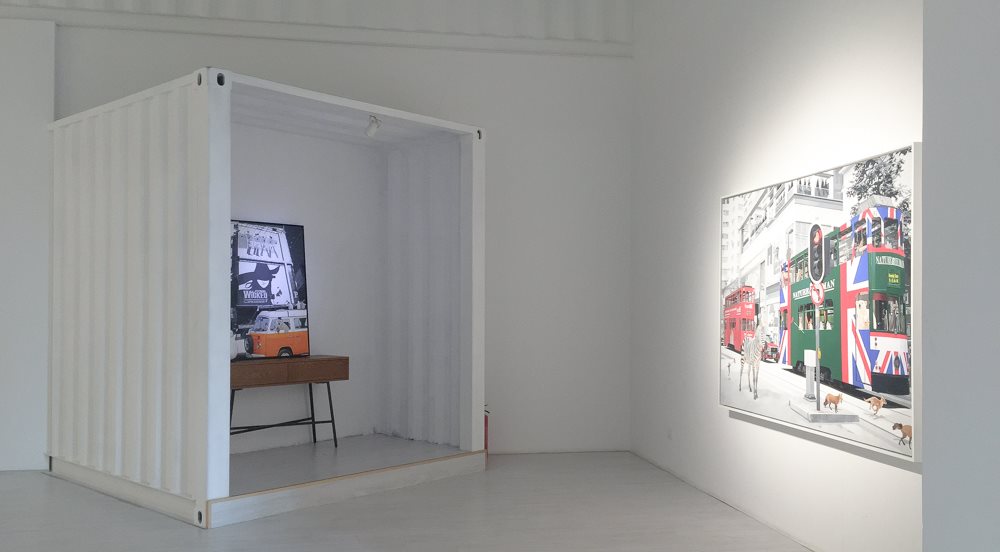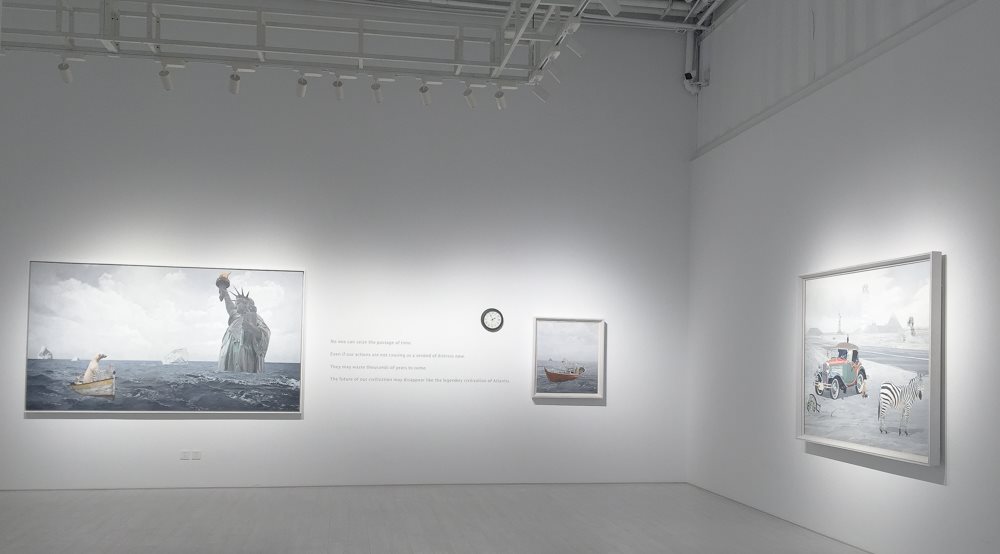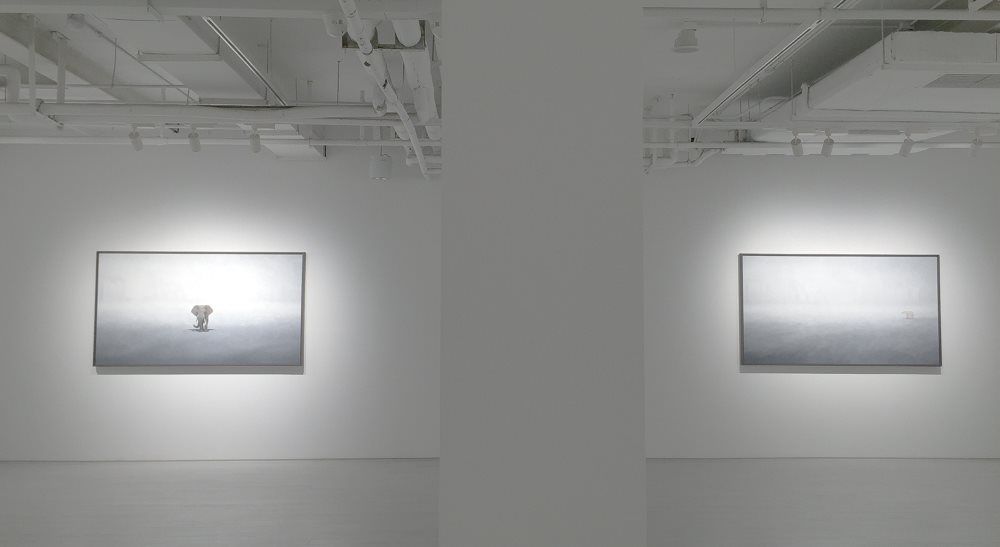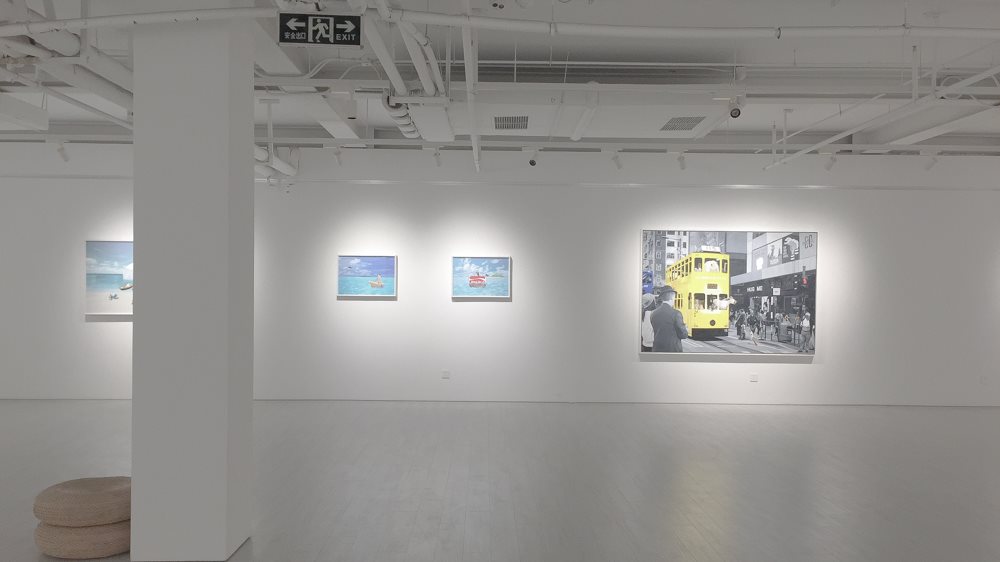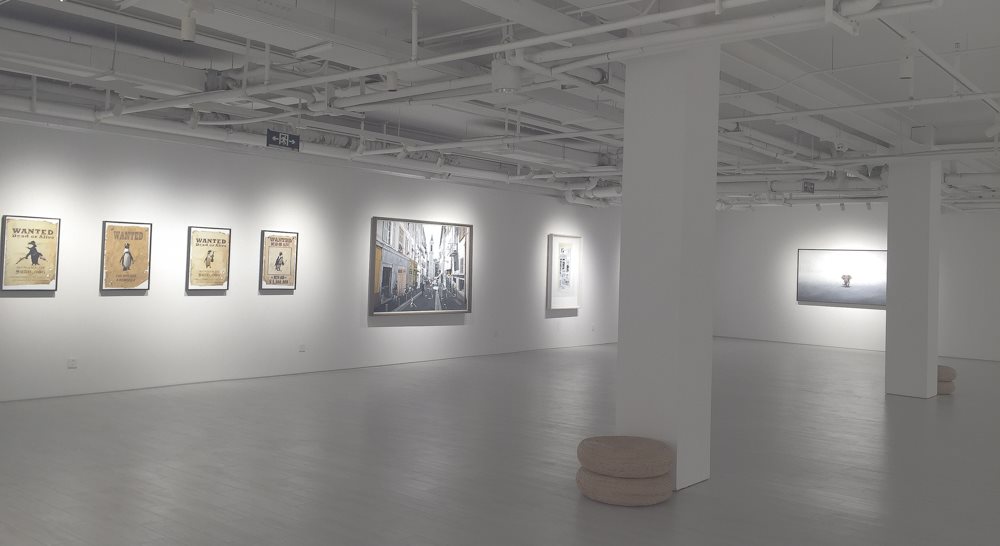Opening: Oct 13, 2018
Date: Oct 13 - Nov 15, 2018
- Press
- Artist
Animal Comedy: a journey to paradise——Solo Exhibition of Jeong Seongjoon
Artist: JEONG Seongjoon
Curator:Kim,byung-heon
Organizer:AuthorGallery
Exhibition Time:2018.10.13 — 2018.11.15
OpenHours: 11:00 – 17:30(Tuesday to Sunday)
Address:706 North First St,798 Art District,Chaoyang District,Beijing,China
The Animal Comedy: A Journey to Paradise
Jin Bingxian
Zheng Chengjun’s works have slight changes every time, but overall, they have one common feature that the theme of “the coexistence of man and nature” runs through all his works. In fact, this theme is mainly related to the environmental art. However, his works show different forms although they share common themes with other environmental art. Most importantly, his works are different from general environmental art because he presents to the audience through familiar ways.
For example, ordinary people will find them difficult to understand or to approach to when they appreciate the works of the land art of Robert Smithson (1938-1973) or the arte povera of Giovanni Anselmo (1934 - ). On the contrary, Zheng Chengjun's works, like canvas oil paintings or sculptures, use traditional media, and their images presented through traditional media are all familiar forms. And relatively speaking, the audience can approach more comfortably. In addition, the animals in his works are beloved by adults and even children, that is, they are beloved by all of the men and women, young and old, so they can guide the audience to approach the works very naturally. So what is the significance of the images shown in Zheng Chengjun's works in the theme of “the coexistence of human and nature”?
Recently, he creates a series of works where there is a group of animals riding in a car, riding a tram or walking and looking around in the city center. What’s more, besides donkeys and young monkeys, polar bears and Antarctic penguins, his works depict pigs, raccoons, chickens, foxes and other protagonists, who start a journey in search of a certain destination. However, it’s worth noting that except the protagonists on the journey and the moving tools they ride directly on, others (such as people, buildings, etc.) are depicted in gray achromatic color. Animals and their vehicles are painted in bright colors, whereas the rest of what is called the background is painted in achromatic color. At first sight, it seems to highlight the protagonists, but there's another way to think about it.
In general, achromatic color is the combination of the negative root “a-”, which means “no or none”, and the ancient Greek word for color “chroma”, which has the same literal meaning, that is “without color”. Moreover, the gray achromatic color that is only combined with white and black, implies the dark state that is out of sight or death. Therefore, modern human beings and all the things in the cities they built can be collectively referred to as modern civilization, and the depiction of these modern civilizations with achromatic color implies the uncertainty of the future of these lifeless modern civilizations. Furthermore, we can interpret the message of the painter that only animals painted in bright colors can guarantee modern civilization and the future of all life.
But Zheng Chengjun doesn't exactly describe the severe problems that will define the earth's future. He wants to depict these problems in a witty and flexible way. It’s because modern people, like him, who find it difficult to bear severe problems as they are, aren’t satisfied, and for all of the men and women, young and old, a light way is much longer and easier to convey than a heavy way. And it can be confirmed only if we read the fable of Aesop (BC 620 - BC564), an ancient Greek writer who personalized familiar animals. And the sermons contained in Aesop's fables have been passed down from time to time and still remaining in the memory of all of us. And the witty and irony elements can be found throughout the works, which is also remarkable.
For example, the pirate image of Donald Trump (1946- ) or polar bear-like smoke in chimneys, the statue of liberty wearing masks and other humorous symbols easily show serious environmental pollution problems, which stays in our memory storage while bringing us joy.
So where do these animals' journeys go? What is the final destination?
In order to make inferences about this problem, we must interpret the information contained in all the works. Meanwhile, we also need to know how their journeys start. Among the animals depicted by Zheng Chengjun, the first animals on the scene are bears living in the North Pole and penguins living in the South Pole. Why do they go on long journeys? It’s because of the current global warming crisis. He says he learns about such environmental issues through TV documentaries about global warming. The most representative animals to be threatened by this problem are polar bears and Antarctic penguins. So the artist imagines and depicts the stories of how they leave the north and south poles in search of the chief culprit of global warming and meet by chance, and what they experience together. In the process, although African penguins are mistaken for criminals who steal icebergs, they eventually want to go to the places where maybe all life on earth, including human beings, can get rid of environmental problems and co-exist together, the earthly paradise, that’s utopia.
In this way, the animal journey in his works is the same as the Divine Comedy of Durante Degli Alighieri (1265-1321), in which the protagonist Dante goes on a long journey, and with the guidance of Virgil, Beatrice and other people, he goes through inferno and purgatory, and finally comes to heaven. Along the way, Dante meets Lucifer, the great demon, Judas Iscariot, the traitor, and others in hell, then passes through purgatory and eventually learns of god’s love in earthly paradise, which ends with a happy ending. The animals painted by Zheng Chengjun also start under the conditions of hell. They take so many risks that they never lose hope even in the desperate conditions of the city center. However, Zheng Chengjun’s works are different from those of Dante. He only hints at the direction we’re going rather than directly depicting or showing heaven. So the animals will continue their journey, and encounter lots of problems. They may sometimes be in darker conditions, and encounter dilapidated ruins. Therefore, Zheng Chengjun's works expect us to look directly at the current problems in an ironic way. Like the butterfly effect proposed by Edward Norton Lorenz (1917-2008), the plastic containers we unintentionally use will give us various kinds of future where we might never be able to breathe fresh air any more. Therefore, in order to complete the animals’ hopeful journey to the paradise, painted by Zheng Chengjun, with a happy ending rather than tragedy, that is, to complete the animal comedy, we should willingly participate in their journey together.

